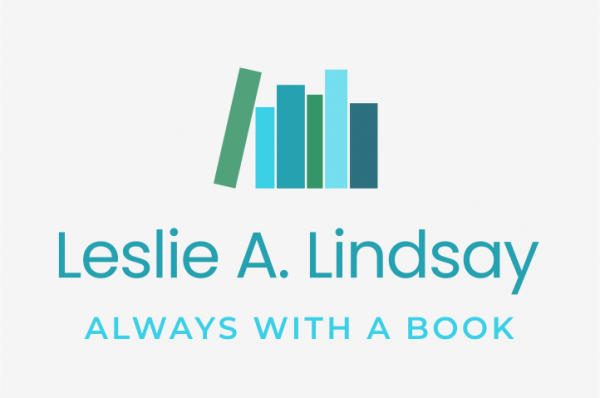By Leslie Lindsay
Enthralling family drama set in two distinct time periods–and places–about the bonds of siblings, a mystery, and more.

~WRITERS INTERVIEWING WRITERS|ALWAYS WITH A BOOK~
APRIL SPOTLIGHT: SIBLINGS
A January 2021 Indie Next Pick
People Book of the Week
Real Simple Best Books of 2021
Starred Publishers Weekly Review
…and more

Is it possible to be a good person even when you’ve done something reprehensible? This is the overarching question of WHAT COULD BE SAVED (Atria Books, January 12, 2021) by Liese O’Halloran Schwarz. This is an ambitious novel both in scope and length, combining dual-timelines of 1972 and 2019, a large cast of characters, a mystery, a drama, societal class, plus it takes place alternatively in Washington, D.C., and Bangkok. It’s a lot.
Laura Preston is a reclusive artist/painter in 2019 who finds herself at odds with her older sister, Bea. Their mother, Genevieve is slowing devolving into dementia. When a stranger connects with Laura via email, saying he’s their long-lost brother, she’s quick to believe it. She ignores Bea’s warnings and travels to Bangkok to learn the truth.
1972: The Preston family is living in a beautiful home in Thailand, raising their three children–Laura, Beatrice, and Philip. They have a cadre of servants–drivers and cooks and housekeepers, common to the lifestyle of the city. Genevieve tries to create some semblance of a ‘normal’ American life with ballet and riding classes, dinner parties, luncheons with the ladies, card games, more. But there’s something off-kilter about their life, which is unbearably hot and humid, stifling.
Alternating between past and present, we get a glimpse of life in Bangkok, all the secrets, and why 8-year old Philip went missing. There are brilliant, beautiful depictions of Thailand, and great period details of the early 1970s, the writing is gorgeous, there are a good deal of ‘ah-ha’ moments, astute observations, and thematically, I liked what the author was exploring: identity, loneliness, art, medicine, passion, mystery, goodness, and emotional complexities.
Please join me in welcoming the lovely and talented Liese O’Halloran Schwarz to the author interview series.
Leslie Lindsay:
Liese, welcome! Thank you for chatting with us. I am struck by one of the last few lines of the book, and I’m paraphrasing, but it boils down to this: we are all imperfect, damaged, yet hopeful; everyone is a work-in-progress. Was this a question you were seeking as you set out to write WHAT COULD BE SAVED?
Liese O’Halloran Schwarz:
Well, yes. I wasn’t seeking it so much as seeking to show it. I think we all worry about not being enough, or good enough. Particularly with social media raining images down on all sides! Even if we know intellectually that those photos are staged and airbrushed and that they don’t reflect an actual reality, on an unconscious level the profusion of perfection can’t help but create some impossible standard. And apart from social media —before it was a thing — there has always been some cultural pressure to be “successful” and I think that’s a fallacy to some extent. Success is an elusive concept, and takes many forms. I hope the book expresses two conflicting notions that I don’t believe actually conflict at all: each one of us is enough, while also being on the way to where we are going. We are all a work-in-progress, at every age, because there’s no end to the possibility for change. There is no stage at which our development must terminate, we never have to stop growing and learning.

Photo by u00c1kos Szabu00f3 on Pexels.com
Leslie Lindsay:
In a sense, WHAT COULD BE SAVED begins with loss. Genevieve, the mother, is aging and developing dementia. Laura’s art career is struggling. And everyone is still sort of mourning the loss of little brother Philip. There are some real, urgent issues at hand. Can you talk about that, please?
Liese O’Halloran Schwarz:
Yes, in the book, some of the losses are extreme — the missing son and brother Philip, Genevieve’s failing grasp on memory, while others are more mundane (the waning of youth confronted separately by both Laura and her father Robert). Every life contains loss, big or small — and if small only, just wait a while, as bigger loss is coming. It’s inevitable. Loss is part of the human condition, a natural consequence of love. That doesn’t mean we don’t agonize about it. That agony is also natural. In some ways loss is most tragic when the person suffering it feels alone with it. The members of the family in the book, the Prestons, all have a tendency to hide their feelings and thoughts from each other. The story shows not only how isolation can potentiate the damage caused by loss, but also the reverse: the healing power of making connection.

Photo by Ksenia Chernaya on Pexels.com
“A delicious hybrid of mystery, drama, and elegance.”
—Jodi Picoult, #1 New York Times bestselling author of A Spark of Light and Small Great Things
Leslie Lindsay:
Your own family lived in Bangkok when you were a child. Since WHAT COULD BE SAVED is primarily a family story, what do you hope readers know about your childhood experiences? Are there any hints of truth here?
Liese O’Halloran Schwarz:
The setting is absolutely true to my childhood — the parties, the household staff, the weather, the swimming pool, the traffic — and I think expats who read the book will recognize common elements about the general experience of making a home in a different culture. My family was not at all like the Prestons, though. We loved Bangkok; my mother in particular never wanted to leave. The book is not meant to cast the setting in a sinister light— the place itself wasn’t responsible for the events of the story.
Leslie Lindsay:
Who was the hardest character for you to write? And why? As you got to know them better, did that change? Who did you relate to the most?
Liese O’Halloran Schwarz:
At first, Beatrice was a bit simply drawn, as the reader mostly sees her through her younger sister Laura’s eyes. She was not the hardest character to write but she was perhaps the hardest to get right. During revision, she bloomed into a whole person, subtly complicated. In a similar way but for different reasons, writing Noi was a challenge. I didn’t find her narrative difficult to generate at all, but in revision I looked very critically at every part of her story, to ensure that I was always writing her as a specific person and not attempting to make her stand in for her whole culture. I can’t say I relate to any one character to the exclusion of the others — when I am writing, I feel I am that person I am writing about — but of course Laura, the baby of her family who struggles with questions of art and purpose, resonates with me.

Photo by Nick Collins on Pexels.com
Leslie Lindsay:
Without answering in complete sentences, what was going on in your life as you wrote WHAT COULD BE SAVED?
Liese O’Halloran Schwarz:
During the writing: Routine. Dog walks, sunrises, coffeeshops, exercise. During the revision: Pandemic.
Leslie Lindsay:
Liese—thank you for this! Before we go, is there anything I should have asked but may have forgotten?
Liese O’Halloran Schwarz:
I don’t think you forgot anything! Thank you very much for your interest in the book.

Artistic photo of book cover designed and photographed by L.Lindsay. Follow on Instagram for more like this @leslielindsay1 #alwayswithabook #bookstagram
For more information, to connect with Liese Schwarz, or to purchase a copy of WHAT COULD BE SAVED, please visit:
Website|Facebook|Twitter|Instagram|BookShop
What to Read Next:
As I read, I was reminded, in part of IF YOU WANT TO MAKE GOD LAUGH & HUM IF YOU DON’T KNOW THE WORDS (both by Bianca Marais), but also THE CONFESSIONS OF FRANNIE LANGTON (Sara Collins) meets the work of Ladee Hubbard (THE RIB KING).
 ABOUT THE AUTHOR:
ABOUT THE AUTHOR:
 ABOUT YOUR HOST:
ABOUT YOUR HOST:
Leslie Lindsay is the creator and host of the award-winning author interview series,“Always with a Book.” Since 2013, Leslie, named “one of the most influential book reviewers” by Jane Friedman, ranks in the top 1% of all GoodReads reviewers and has conducted over 700 warm, inquisitive conversations with authors as wide-ranging as Robert Kolker and Mary Kubica to Helen Phillips and Mary Beth Keane, making her website a go-to for book lovers world-wide. Her writing & photography have appeared in various print journals and online. She is the award-winning author of SPEAKING OF APRAXIA: A Parents’ Guide to Childhood Apraxia of Speech. A former psychiatric R.N. at the Mayo Clinic, Leslie’s memoir, MODEL HOME: Motherhood, Madness, & Memory, is currently on submission with Catalyst Literary Management. Leslie resides in the Chicago area with her family.
Instagram|Facebook|Twitter|Bookshop.org
LOVE IT? SHARE IT!

[Cover and author image courtesy of Atria Books and used with permission. Artistic photo of book cover designed and photographed by L.Lindsay. Follow on Instagram for more like this @leslielindsay1 #alwayswithabook #bookstagram]

